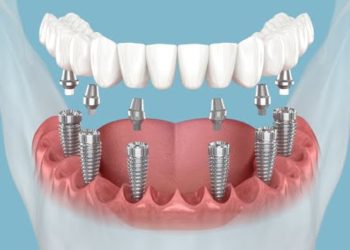Cerebral palsy (CP) is a condition that affects a child’s movement, muscles, and how they hold themselves up. It can make everyday things like walking, talking, or even eating a challenge.
The consequences of CP for both the victim and their extended family are quite far-reaching. If this condition was caused by the negligence of another party, you can click here to learn how you can hold them accountable.
While CP affects each child differently, the sooner it’s diagnosed, the sooner treatment can begin. There’s no known cure for Cerebral Palsy yet, but with early detection, the individual has a better chance of managing the condition before the symptoms spiral out of control.
Tests for Diagnosing Cerebral Palsy
Here are some tests that can be used to detect possible cerebral palsy in an individual:
Brain Scans
Brain scans use different technologies to create detailed pictures of the brain structure. There are two main types of brain scans used for CP diagnosis:
- MRI Scan (Magnetic Resonance Imaging): This uses strong magnets and radio waves to create detailed 3D images of the brain. The child lies inside a large machine during the scan, which can be noisy but is painless. MRI scans can show problems like brain malformations, bleeding, or injuries that might have occurred before birth or shortly after.
- CT Scan (Computed Tomography Scan): This uses X-rays to create detailed cross-sectional images of the brain. The child lies on a table while the machine scans their head. CT scans are faster than MRIs but might involve a small dose of radiation. CT scans can also show brain abnormalities like bleeding, swelling, or calcifications that might be linked to CP.
After the scan, your doctor will analyze the images and discuss the findings with you. If abnormalities are found, they might recommend further tests or consultations with specialists depending on what’s seen.
Electroencephalogram (EEG)
While an EEG doesn’t directly show CP, it can help doctors identify if there’s unusual brain activity that might be linked to CP. For example, it can help rule out seizures, which can sometimes occur in children with CP.
It’s painless. Your child will lie comfortably while a technician gently attaches the stickers. The test usually takes about 30 minutes to an hour, and your child might watch a movie or play quietly during that time.
The doctor will look at the EEG results and discuss them with you. If they see anything unusual, they might recommend further tests.
Genetic Testing
Genetic testing involves taking a small sample of blood or cheek swabs to analyze your child’s genes. It’s a way to check the family blueprints to see if there are any known instructions that could be linked to CP. This information can help doctors understand the cause of your child’s CP and plan the best treatment approach.
A healthcare professional will take a small sample and send it to a lab. The lab technicians will then look for specific changes in genes that might be linked to certain types of CP. This test is usually done on an outpatient basis and doesn’t involve any discomfort.
After receiving the genetic test results, your doctor will explain what they mean. If a specific genetic cause is found, they can discuss treatment options and connect you with specialists if needed.
Metabolic Testing
Your body is constantly breaking down food particles to generate energy. Metabolic testing checks for imbalances in this process, which can sometimes contribute to CP.
Metabolic testing can involve blood tests, urine tests, or even a spinal tap (where a small amount of fluid is withdrawn from the spinal cord).
The specific test will depend on what the doctor suspects might be causing your child’s symptoms. These tests are usually done on an outpatient basis. It can be a bit painful, especially since blood needs to be drawn.
Based on the test results, your doctor might recommend specific dietary changes or medications to manage the metabolic imbalance in your system.
Blood Tests
Blood is like a liquid messenger, carrying information throughout the body. Blood tests can provide valuable clues about what’s happening inside your child. While not a direct test for CP, blood tests can help rule out other conditions with similar symptoms and sometimes identify underlying issues that might be contributing to CP.
Wrapping Up
A cerebral palsy diagnosis is not the end of the world. If detected early, it can be managed without excessive downsides.
Your medical practitioner will provide you with details and pointers on how to manage the situation without further complications.











































































